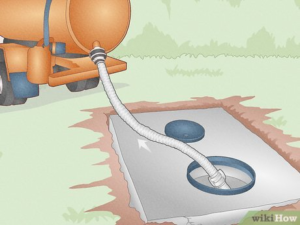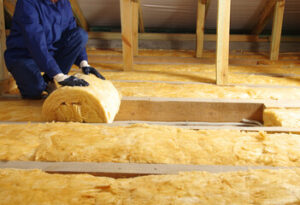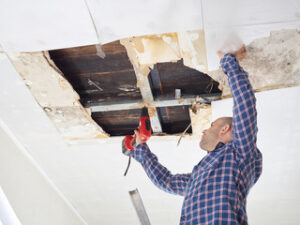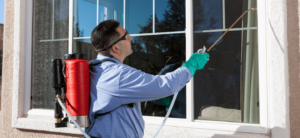Septic Tank Cleaning Perth is important to keep your septic system working properly. If septic systems aren’t cleaned regularly, they can emit foul odors throughout your home and contaminate the soil surrounding your tank.
Septic tanks are large underground containers that hold wastewater from your house or business. They must be pumped periodically to remove the scum and sludge layer that accumulates in them.

Septic tanks and systems contain organic waste material as it breaks down, producing potentially toxic gases like methane and hydrogen sulfide. When the system is working properly, these gases should remain in the tank or exit the vent stack on your roof. However, if you notice foul odors in your home, there is usually a problem with the plumbing somewhere along the line.
If septic tank odors are escaping into your toilets, showers, sinks, or baths, this is a sign that the septic tank is full and the gases are flowing back through drains in your home. It also means that the bacteria that break down the sewage have been pushed into your house, making your indoor air unhealthy.
The solution is septic tank jetting, a high-pressure water cleaning technique that flushes away clogs, sludge, and debris that can emit smelly odors. The certified plumber inserts a hose into the septic tank and releases a powerful stream of water, effectively breaking down sludge and clearing out clog-causing grease deposits. This will eliminate foul odors from your indoor plumbing and help the bacteria inside your home do their job more effectively.
In addition to regular septic tank cleaning, you can avoid septic odors in your home by running water regularly, only flushing toilet paper and human waste, and never putting anything into your drains that shouldn’t be there. Pouring a cup of household baking soda down any sink or toilet once a week can keep the odor-causing bacteria in your home from getting too out of control.
Finally, you should make sure that the septic tank riser cover is closed tightly and has no cracks or holes. The cover is what directs sewage to the septic tank from your house, and any opening or leak could allow unwanted materials to enter the system.
If your septic tank is not releasing the gases that it should, this can be due to a clog or other problems with the venting system. The vent stack is supposed to send sewage gasses up and out through your roof, but leaves or other debris can sometimes block the vents and cause the stinky odors to circulate around your home. If this is the case, the plumber will clear the vents and restore proper septic tank ventilation.
Sewage Backups
Sewage backups are not only a disgusting sight, they can also damage your property. They can also pose a health risk to your family and pets. They are a serious issue that requires professional attention as soon as possible. If left untreated, sewage can lead to water damage in your home, contaminate your drinking water, and cause severe health issues. You can prevent sewage problems by scheduling regular septic tank cleaning and by keeping an eye on your drains for signs of problems.
There are many warning signs that your septic tank is full or clogged. Gurgling sounds from your drains can indicate that air is trying to escape blockages caused by accumulated waste. Bad odors near your drains or the septic tank area are another sign of an overfilled tank that needs immediate attention. In more serious cases, sewage can back up through your drains and into your home.
If you notice sewage backing up through your toilets or other drains in your house, shut off your home’s water and electricity as soon as possible. Do not flush toilets or use tubs and sinks until professionals have inspected the situation. Be sure to wear protective clothing, including a face mask and rubber boots, before entering the affected area. Keep children and pets away from the contaminated area and open windows to ventilate the room.
Proper septic tank maintenance can prevent most sewage backups from occurring. However, if you do experience a problem with your system, finding a local septic tank company will help you to resolve the issue and avoid costly repairs in the future.
The bacteria in your septic tank help to break down solid waste, but harsh chemicals can kill those bacteria and disrupt the natural composition of the tank. Avoid using harsh chemicals and antibacterial soaps in your home, and you will reduce the likelihood of sewage backups.
If you are considering selling your home, regularly maintaining your septic tank will increase the value of your home. Potential buyers will view your septic system as an asset, rather than a nuisance.
Unusual Grass Growth
The grass over your septic tank is usually thin and dries out quickly. Moreover, the bacteria in the tank are doing their job of breaking down waste, which creates heat. This heat stresses the grass and causes it to die. However, this is not a sign that something is wrong with your septic tank.
It is just the way nature intended for the grass to grow over the septic tank and surrounding soil. This allows sunlight to reach the septic system and helps with the bacterial process.
Nevertheless, you should not plant anything taller than grass or shrubs over the tank. This is because the roots could clog or damage the septic system and/or leach field pipes.
You can also try adding some peat moss to the soil around the tank to help it retain moisture without waterlogging. This is particularly helpful during dry spells. If you do not have access to peat moss, then consider planting creeping thyme or sedum as a cover crop for your septic tank area. These are tough and hardy plants that do not require much water to survive and look good in the yard.
A healthy septic tank is an essential part of your home’s plumbing system. Regular septic tank cleaning and proper use of the septic system can prevent serious problems like sewage backups.
If you notice a problem with your septic system, contact a septic professional as soon as possible. They will inspect the system and determine whether it is time for septic tank cleaning.
Remember, untreated sewage contains pathogens that can cause serious health problems. It is also dangerous to touch, so it’s important to wear protective gear if you must. In addition, if you encounter a foul smell, do not enter your basement or any other area of the house where wastewater has pooled until you have safely cleaned it up. A septic tank professional will know how to handle these hazardous materials and how to prevent them from getting into your house. This will minimize the risk of sewage backing up into the home and protect the health of your family and pets.
Clogged Drains
Even well-maintained septic systems can suffer from slow draining and clogged toilets. When this happens, you’ll need to identify where the clog is located and take corrective action. It may be in the tank itself, or the piping leading to and from it. It could be a simple clog or something more serious such as a tree root invasion or broken system component.
Whether you’re facing a septic tank clog or a clogged toilet in your home, there are some tried and true methods to unclog your pipes without calling in a professional. Using these techniques will save you money and keep the sewage from stinking up your entire house.
Most septic tank clogs are caused by fats, oils and grease that are poured down the drains. When they cool, they solidify and cling to the sides of the pipes and trap other debris until they form a clog. These are difficult to break apart and can cause a backup of wastewater into your house, which is a health hazard.
The septic system itself is an ecosystem that must stay balanced in order to work properly. There are chemicals available to hasten the process of breaking down sludge, but these can also throw off the balance of the ecosystem and make your septic system less effective.
Your septic system consists of the waste pipe that leads to and from the septic tank, the septic tank itself and the absorption field or drain field in the soil where sewage is sieved through the dirt. The drain field can also be prone to water clogs from rainstorms or snowmelt. The lines from the septic tank to the drain field can also be susceptible to clogs and damage caused by tree roots.
When the septic tank is clogged full of solids, it will restrict the flow of wastewater to the absorption field and the drain fields. This can cause a chain reaction that can back up the septic system into your home and clog your lower level plumbing fixtures. This can be a very dangerous situation that requires immediate attention.








